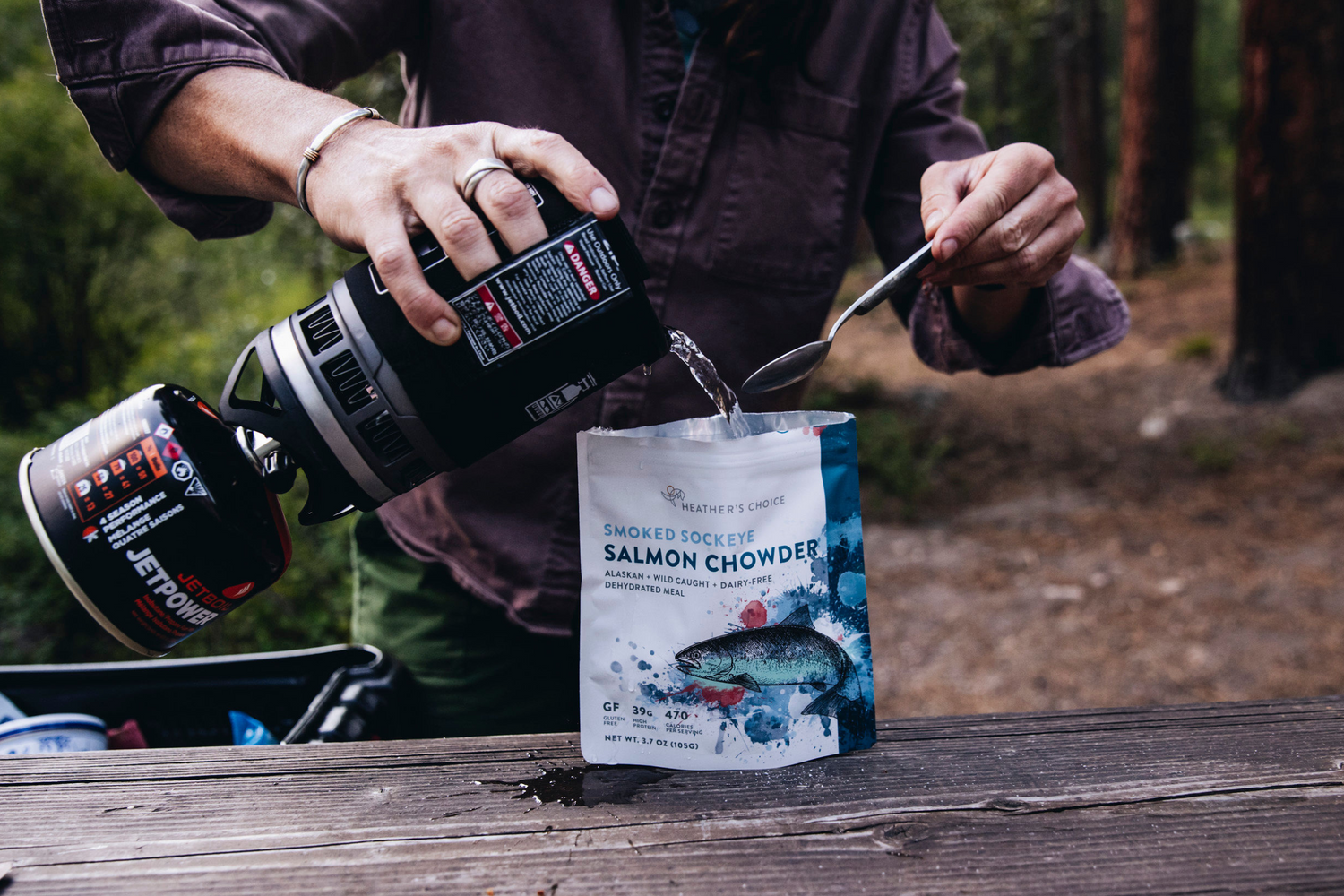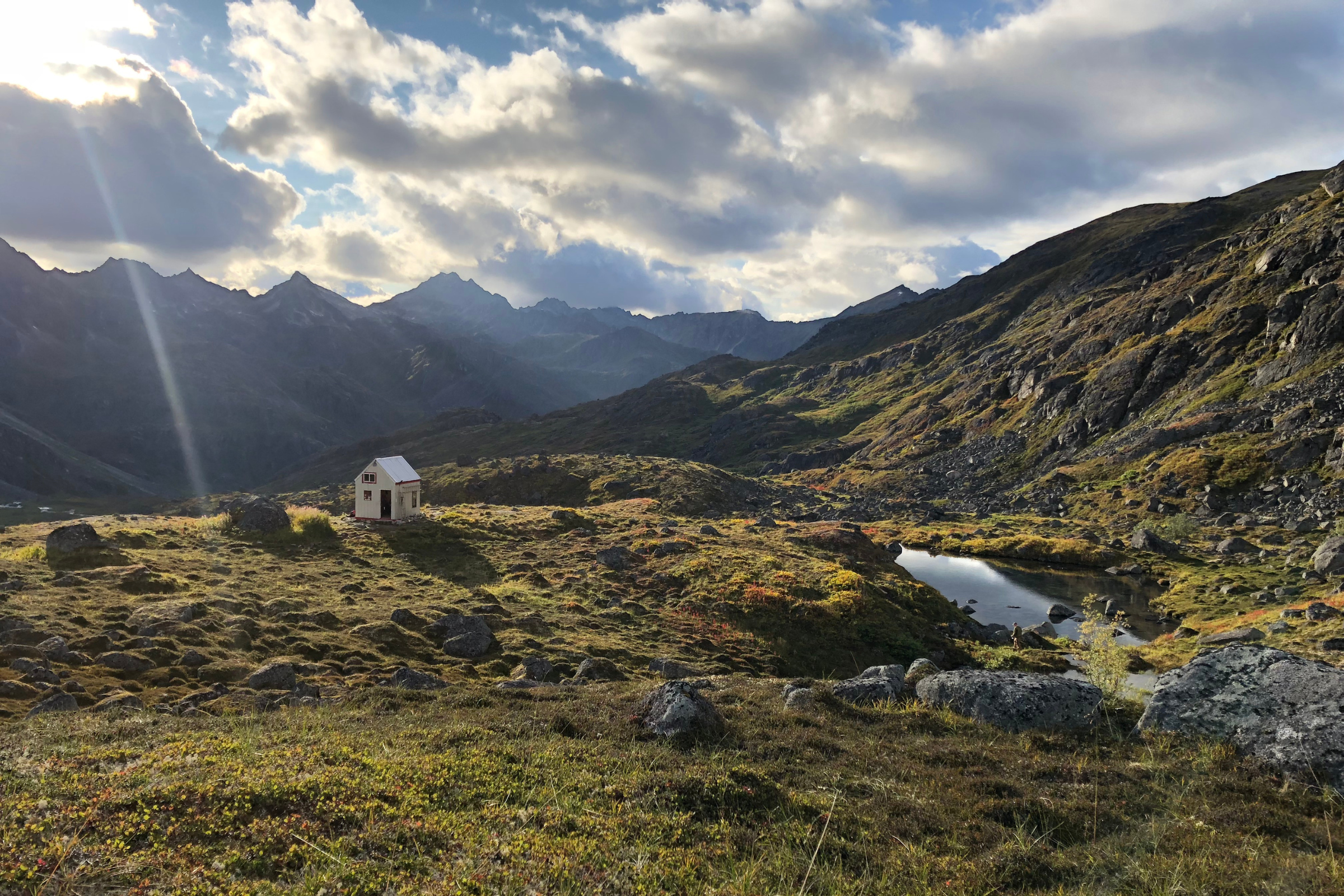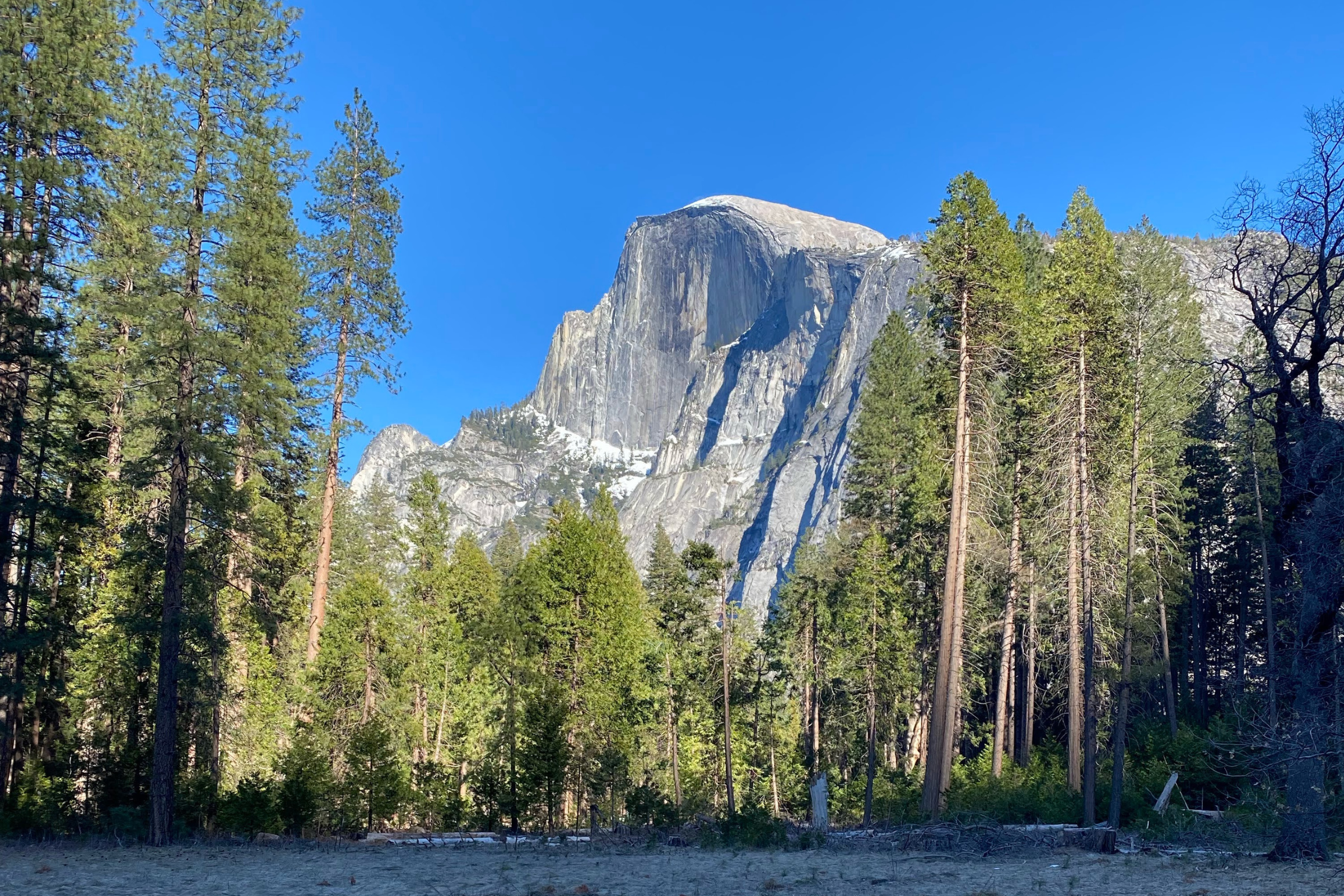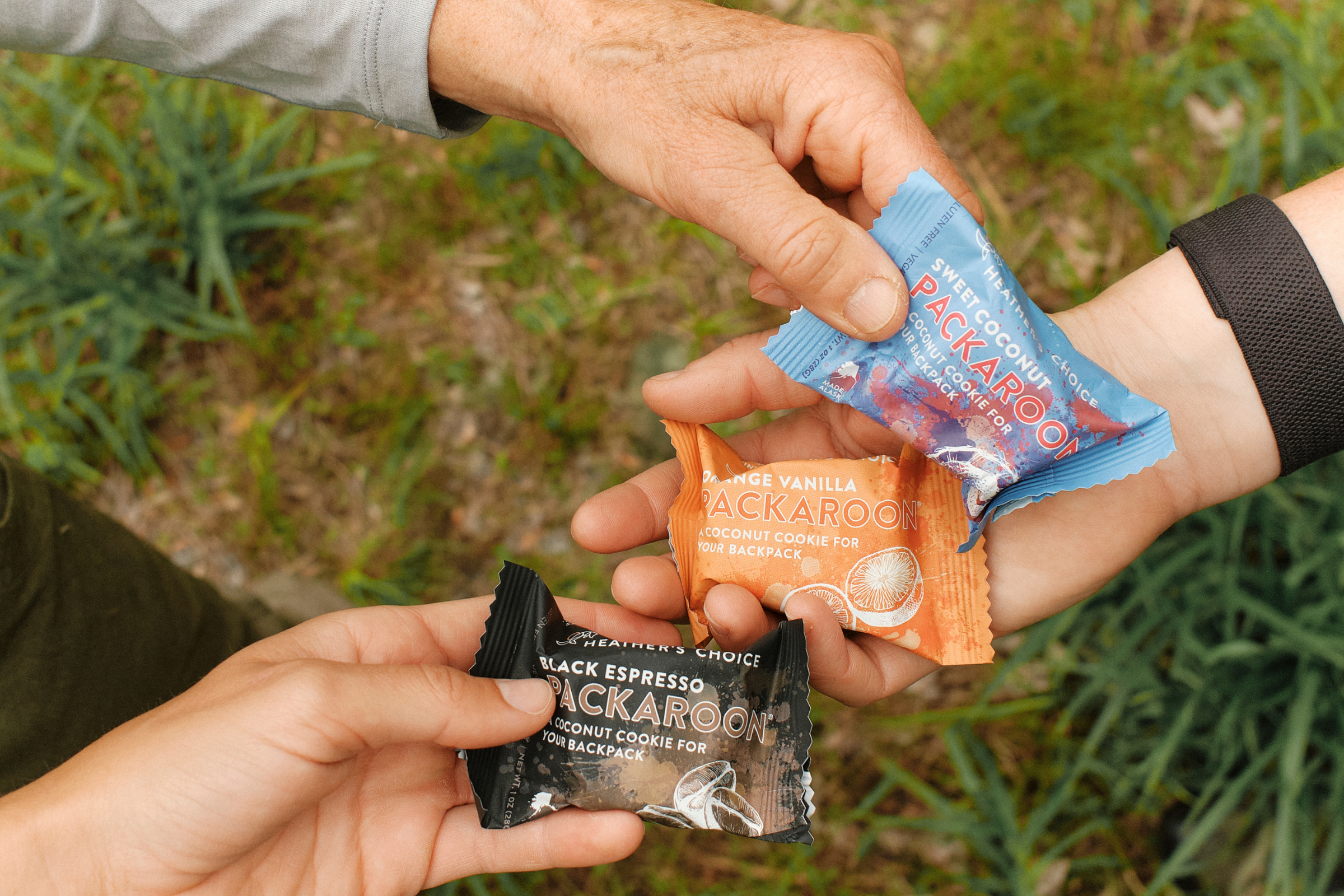Here at Heather’s Choice, we are intentional about all of the ingredients we use. Considering both nutrition and environmental impacts, we aim to create flavorful and energy-boosting meals to fuel all sorts of adventures! One of the ingredients we are most proud to use is our Alaskan, wild-caught, smoked sockeye salmon.

Most of the salmon consumed in the United States is farmed salmon, rather than wild-caught. Farmed salmon and wild-caught salmon differ in the life cycle of the fish, nutritional offerings, and environmental impact. These issues hit close to home, as a company that values all of these things and is located in Alaska, which contributes a significant amount of wild-caught salmon to the global market. We believe that it’s important for consumers to understand the background of the food they purchase, so they can make informed decisions.
Wild salmon hatch in freshwater, where they live variable amounts of time, depending on the species or location they are in. Eventually, the young salmon head to the ocean where they mature. After up to six years in the ocean, when they are ready for reproduction, they head back to their original spawning grounds to lay eggs and repeat this cycle. After spawning, adult salmon die and contribute nutrients to the same ecosystem. In a farmed salmon system salmon spend some time in an enclosed and controlled freshwater system, then a few years in a seawater pen. These two different life cycles also produce vastly different diets; wild salmon eat invertebrates, while farmed salmon eat processed fish feed. Wild salmon's natural diet contributes to its vibrant color.

While farmed salmon tends to be higher in fats, wild-caught salmon, on average, have a better omega-3 to omega-6 ratio. Omega-3s are essential for energy and nervous system regulation! Wild salmon also tends to have higher quantities of minerals like calcium and iron.
There are some major differences in contaminant exposure in farmed and wild salmon. Farmed salmon have higher levels of dioxins (environmental pollutants) that are carcinogenic. Consistent consumption of farmed salmon increases the risks that come with exposure to these dioxins. To put it in perspective, you could consume wild salmon at a rate of about one meal/day without going over the recommended dioxin exposure amount. You’d want to limit farmed salmon to less than 10 meals a month to avoid going over the same recommended exposure amount.

The consumption of animal protein comes with an impact on the environment. However, our buying choices determine what that impact is. Pollution, disease spread and habitat loss have contributed to the decline of natural salmon runs in the United States. Unfortunately, farmed salmon operations contribute to these negative impacts on our wild salmon populations. Farmed salmon experience more disease related to their close quarters, and then escaped farmed salmon can pass this disease to vulnerable wild populations. Farmed salmon are fed antibiotics and treated with pesticides that then impact the rest of the marine ecosystem. This use of antibiotics also contributes to antibiotic resistance which is a growing concern for human development.
So why do we choose wild-caught salmon? For the important nutrients, the lower level of chemical exposure, and to support the remaining natural salmon runs we have! As an added bonus, we get to support some great Alaskan fishing operations and so do our customers with each Smoked Sockeye Salmon Chowder purchase.

Have you had our Smoked Sockeye Salmon Chowder? Do you incorporate wild-caught or farmed salmon into your diet? Let us know what you think!
Abby is the Heather’s Choice Customer Service Expert and provides sales support. She made the long drive from Michigan (twice) back in 2022 to make Alaska her new home. She has a strong love for food and a background in organic vegetable farming. Outside of the office you can find her climbing or doing yoga at the local rock gym, hiking in Alaska’s wilderness, or reading.




